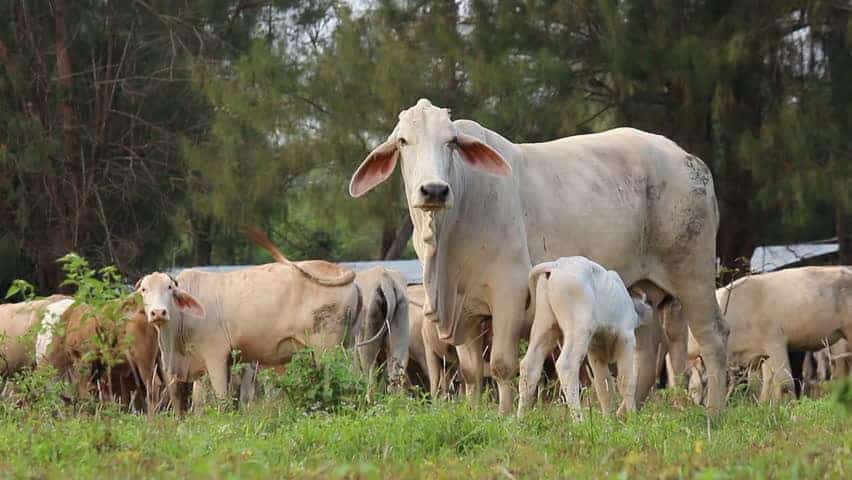
RCEP Churn: Protecting Indian Dairy from itself
India’s largest dairy cooperatives have resisted free trade agreements (FTAs) with countries such as New Zealand and trade blocs like the EU in the past, and are staunch opponents to the proposed Regional Comprehensive Economic Partnership (RCEP). The RCEP is an imminent FTA between 16 countries including India, China, Australia, New Zealand, Japan South Korea and members of the Association of Southeast Asian Nations (ASEAN). The RCEP will cover several economic sectors, however, concerns around dairy imports are key to India’s strategic calculus.
India accounts for a fifth of global milk production but holds a negligible market share of global dairy exports. Conversely, most RCEP countries are import-dependent, making the combined dairy market ripe for Indian exports, that is if the production capabilities in the country were to mature in the future. However, large dairy cooperatives in India seem to fear a narrowing of their domestic market share to high-value imports from New Zealand and Australia; and, therefore, seem far from prepared to face competition in potentially lucrative export markets such as China, Japan and South Korea.
India’s self-sufficiency in milk production is the result of an overall focus on increasing agricultural production following Independence. ‘Operation Flood’ which played a catalytic role in dairy development, was akin to the Green Revolution in many ways. Input costs were indirectly controlled through state-supported cooperatives like Amul, and competing imports were banned outright. The political will of leaders like Lal Bahadur Shastri complemented the vision of technocrats like Amul’s Verghese Kurien and created perfect conditions for boosting milk production. Unfortunately, this initial production focus has hardwired rigidities that are hard to shake off.
Consider some takeaways from the National Action Plan for Dairy Development prepared by the government in 2018, in relation to the RCEP debate. The plan is unequivocal on two fronts. India’s cattle numbers cannot increase substantially, chiefly because of the immense ecological pressure from water-use and cattle-feed. This puts the onus on improved productivity to expand future production. Additionally, less than half of the marketable production surplus is handled by the organized sector. Cooperatives and private dairies share this organized sector equally, and must, therefore, share responsibilities for addressing the productivity gap.
Thus, both cooperatives and private dairies should participate equally in policy conversations. However, a handful of large cooperatives command asymmetric policy clout stemming from large production volumes. This is problematic on three counts.
First, private sector dairies would undoubtedly benefit from an FTA if it leads to commercially meaningful opportunities for investors in the dairy value chain—particularly at the higher end—in differentiated products like cheese. Private dairies have built their processing capacities much faster than cooperatives despite their first-mover advantage. Global dairy majors like Danone and Lactalis consequently invested in mid-sized and large dairies in India. The market access provided by RCEP could be used to position India as a milk processing hub for Asia. And, at a time when domestic investments are waning across all segments of the economy, the RCEP would be a boon to private dairies. Low private sector awareness and lack of effort by state institutions to bridge such knowledge gaps, mean that the private sector has no real voice.
Second, large cooperatives naturally attract politicians because of their scale and influence. Take Amul as an example—which sits atop 18 milk unions and where most union appointments are political. Congress dominated the appointments of union heads until the mid-2000s when the BJP began to wrest control. This inevitable political interest in large milk cooperatives generates perverse economic incentives. For instance, milk prices are often suppressed before elections to keep consumers happy, even if market dynamics dictate otherwise.
Similarly, many cooperatives siphon off milk to private processors, while enjoying political patronage and protection. This is akin to pilferage of Food Corporation of India stocks wherein cereals are bought by agents of the state at Minimum Support Prices, and then illegally sold to private food processors for a song.
Last, the unit economics of most Indian dairies make little sense. According to the Food and Agriculture Organisation, the global average dairy herd size is 2.4 and according to the National Dairy Development Board, Indian cows average 3 litres of yield. Mother dairy sells one litre of milk for around Rs 44. Since the strength of the cooperative narrative is the devolution of profits to the producer, let’s assume full transfer from consumer to producer per litre of milk sold. Feeding bovines typically accounts for 70% of the price at which milk is procured by cooperatives. This leaves the producer with around Rs 100 in hand, which is also optimistic given all liberal assumptions made here.
In fact, the National Action Plan estimates monthly average producer income to be Rs 516 per month! This is roughly equivalent to the daily minimum wages prescribed for unskilled workers in the National Capital Territory of Delhi. The representatives of large cooperatives defend these paltry earnings of their producers.
In 1988, during a speech at the ‘Shastri Indo-Canadian Institute’, Verghese Kurien stated that “there is plenty of room for competition and our only request is that it be a fair competition”. Twenty years on, it seems we are still trying to grapple with this idea of fairness. Whether or not India joins the RCEP and accedes to demands from competing for dairy powerhouses is almost a secondary question. We should first explore the reasons why most of the private sector is always mute in FTA discussions, why cooperatives inevitably become political, and why we are all comfortable with the average dairy farmer earning less than the cost of coffee at hotels where governments typically conduct RCEP negotiations.
Read: Budget and Dairy Sector: Doubling of Milk Processing Capacity no Panacea
The article is extracted from Financial Express, October 11, 2019
